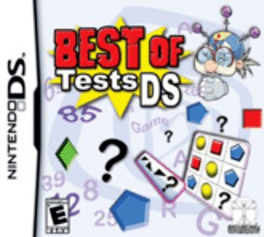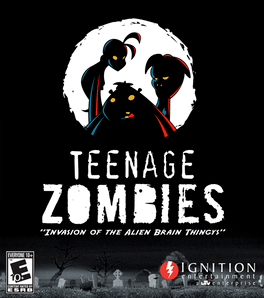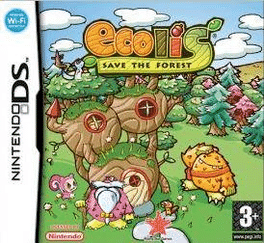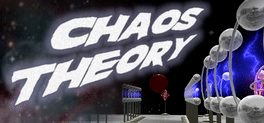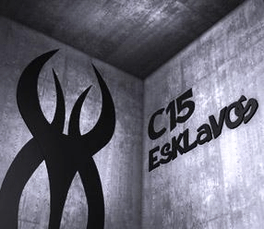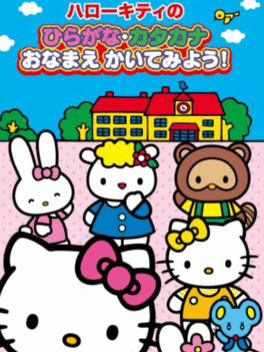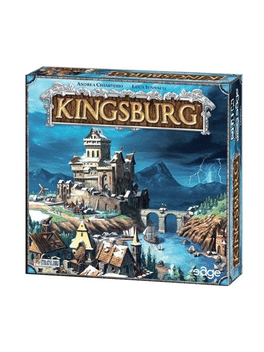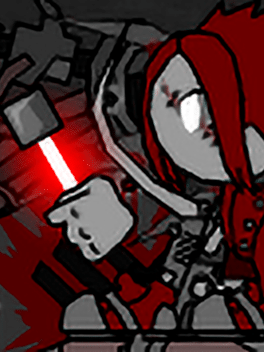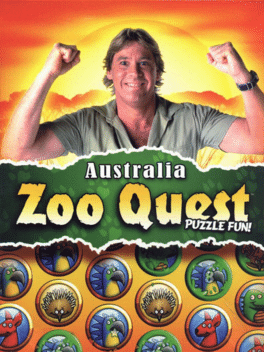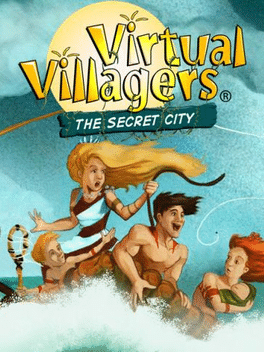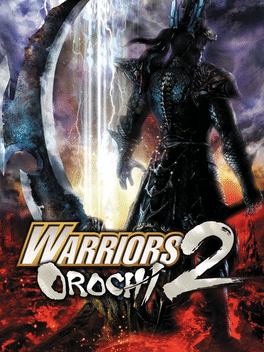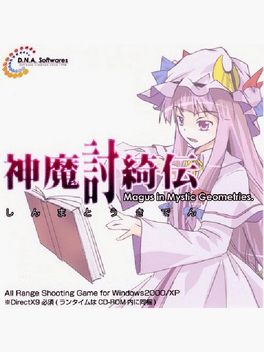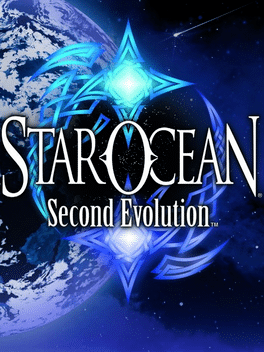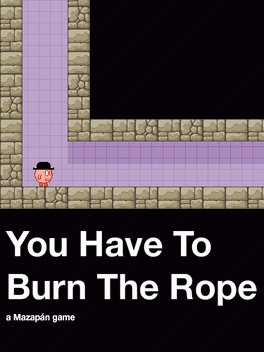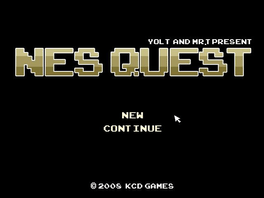New Games - Page 9991
-
Best of Tests DS
2008
Best of Tests DS
2008
THINK THEREFORE I PLAY! Logic, observation, memory, speed of perception and analysis: these are the qualities that defi ne the famous Intelligence Quotient and the ones that Best of Tests DS will enable you to test, according to renown scientifi c protocols. It will also allow you to improve them! Through the very many tests and using all the functionalities specifi c to the Nintendo DS which are found in the three gaming modes (Training – verbal, numbers and letters, drawings, playing cards, dominos, etc. - Memory and Tests) Best of Tests DS calculates your I.Q. and adapts itself to your level in order to offer you a personalized challenge that is always renewed and updated. All the classic challenges of I.Q. tests on your Nintendo DS. An excellent way to maintain and improve your intelligence, while you are having fun! Several hundred different questions The best way to prepare for professional I.Q. tests! A continually renewed interest thanks to the varied rules and different ways to answers the qu -
Fate of Hellas
2008
-
Teenage Zombies: Invasion of the Alien Brain Thingys!
2008
star 5.7The Earth is under attack by a horde of Alien Brain ... uh ... Thingys! Humans, succumbing to ray-guns, mind-control, and shiny flying saucers, have failed to defend their planet and let it fall easily into the clutches of the Big Brain and his army of Brain Thingys. The only hope left for mankind is three Teenage Zombies that have arisen from a graveyard disturbed in the invasion. The undead trio ignores their normal human victims in favor of the pulsing pink brains they see EVERYWHERE - all the while being lured to the ultimate lunch: THE BIG BRAIN! The Big Brain soon refocuses his efforts and resources to battle the Earth's greatest champions: The Teenage Zombies! Teenage Zombies uses a whimsical style that focuses on, and parodies the Zombie genre, as well as 1950s style Science Fiction. This is presented in a comic book look featuring comic book panels, dialogue boxes and story telling. Gameplay involves side-scrolling adventures opening up to stylus mini-games, double-screen boss battles, and brain busting -
Eco-Creatures: Save the Forest
2008
star 5Deforestation, pollution, global warming and industrialization are just some of the many important themes in Eco Creatures: Save the Forest, a unique real-time strategy game and the only game of its kind that promotes awareness of environmental perils while tasking players with defending the Mana Woods against them. Players use the Touch Screen to control units of woodland creatures—named Ecolis, Ecoby and Ecomon—that will protect the naturally beautiful Mana Woods and recover the polluted land. All creature types have unique skills that must be strategically managed. With proper nurturing, they can evolve to learn new abilities that help a player complete the game’s more than 40 environmental missions. As players grow their woodland army, they must also plant new trees to prevent deforestation and revitalize the woodlands. In addition, Eco Creatures includes a creative Land Make feature that lets players build and play their own maps. This eco-friendly RTS also supports two-player play via Nintendo Wi-Fi Con -
Chaos Theory
2008
Chaos Theory
2008
star 7Meet Chaos Theory! A balanced mix of arcade gameplay and challenging physics-based puzzle solving.The main objective in Chaos Theory is to fill "Collectors" with magnetically charged particles. Those particles move freely in the environment and are influenced by other objects and their magnetic forces. Attract free particles, bind them to objects, and shoot them onto the Collectors to finish a level. -
Esklavos C15
2008
-
QQ Free Fantasy
2008
-
Java-Klingsburg
2008
Java-Klingsburg
2008
This is an independent developers take on the 2007 dice-allocating, worker placement game by Andrea Chiarvesio and Luca Iennaco. In Kingsburg, players are Lords sent from the King to administer frontier territories. The game takes place over five years, a total of 20 turns. In every year, there are 3 production seasons for collecting resources, building structures, and training troops. Every fourth turn is the winter, in which all the players must fight an invading army. Each player must face the invaders, so this is not a cooperative game. The resources to build structures and train troops are collected by influencing the advisers in the King's Council. Players place their influence dice on members of the Council. The player with the lowest influence dice sum will be the first one to choose where to spend his/her influence; this acts as a way of balancing poor dice rolling. Even with a very unlucky roll, a clever player can still come out from the Council with a good number of resources and/or soldiers. Each a -
Thing Thing 4
2008
-
Virtual Villagers 3: The Secret City
2008
star 7Embark on a journey with a group of villagers in search of a new part of the island to populate. Land on the hidden shores of the northern side of Isola and explore what was once a secret city. Find new sources of food to nourish your villagers and help them rebuild the remains of this mysterious city. Who lived here before? Where have they gone? What is the secret of Isola? -
Warriors Orochi 2
2008
Warriors Orochi 2
2008
star 6Warriors Orochi 2 is a 2008 video game developed by Koei (now Tecmo Koei) and Omega Force for the PlayStation 2. It is the sequel to Warriors Orochi, a crossover video game of the Dynasty Warriors and Samurai Warriors series. The game was released on September 23 in North America and September 19 in Europe. A version for the Xbox 360 was released on September 4, 2008 in Japan, and alongside the PS2 releases in North America and Europe. A PlayStation Portable version has been released in Japan, North America and Europe. -
Crystalline
2008
Crystalline
2008
In Crystalline the player controls the character in an abstract universe. While collecting energy crystals the player must avoid the dangerous Chaos beings. Stopping them from dissolving the remaining crystal structures is the last hope of saving the crystalline beings. -
Magus in Mystic Geometries.
2008
Shinma Touki Den (English: The Legend of Demonic God) is a free moving shooting game developed in March 2008 by D.N.A.Softwares and ZUN. It is a Touhou fangame developed by D.N.A.Softwares. It is one of the few Touhou fangames to have been made with involvement from Touhou series creator ZUN. With only three lives and three bombs the player controls the on-screen Patchouli Knowledge from a top-down perspective, defeating ever-increasing swarm of enemies and collecting the items they drop (enemies bombed will not drop items). There are six stages and no specific storylines. Players start the game with only stage 1 unlocked, while other can be unlocked by obtaining clear points from beating the medal scores listed for each stage. Magus in Mystic Geometries is a Touhou fangame developed by D.N.A.Softwares. It is one of the few Touhou fangames to have been made with involvement from Touhou series creator ZUN. -
Star Ocean: Second Evolution
2008
star 3.8Enhanced remastered of Star Ocean: The Second Story exclusively for PSP New high-quality animated cut scenes and character designs by Production I.G. Characters will now change facial expressions depending on their mood Revised game engine and improved real-time battle system keep players immersed in the action More private actions and extensive new fully-voiced dialogue bring the story to life -
8bit Killer
2008
8bit Killer
2008
8bit killer is an action first person shooter styled to resemble a NES game in look and feel. 32x32 pixel textures, 64 color nes palette and 1bit sounds make this game look like an early 90s game. The soundtrack has been created by the genius RushJet1. The story, characters and scenes are inspired by films like Mad Max or 2013: Rescue in LA and by games like Contra, Megaman, Bionic Commando, Metroid, Catacomb 3D or the sequel Wolfenstein 3D, and many others... -
You Have to Burn the Rope
2008
In this incredibly short action-platformer, intended as a subtle parody of Portal, the player must defeat a massive, seemingly invulnerable boss... but how? -
NES Quest
2008
-
Call of Duty 4: Modern Warfare - Game of the Year Edition
2008
Call of Duty 4: Modern Warfare differs from previous installments of the Call of Duty series. Previous Call of Duty games have a distinct three country-specific campaign style, while Call of Duty 4 has a more film-like plot with interlaced story lines from the perspectives of Sgt. Paul Jackson of the Marines 1st Force Recon and Sgt. 'Soap' MacTavish of the British 22nd SAS Regiment. The Game of the Year Edition includes a code for the Variety Map Pack, adding 4 new multiplayer maps: Broadcast, Creek, Chinatown and Killhouse.

